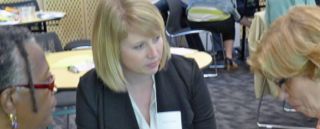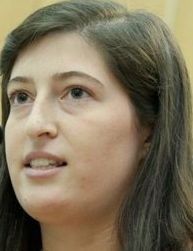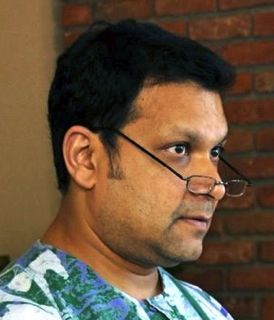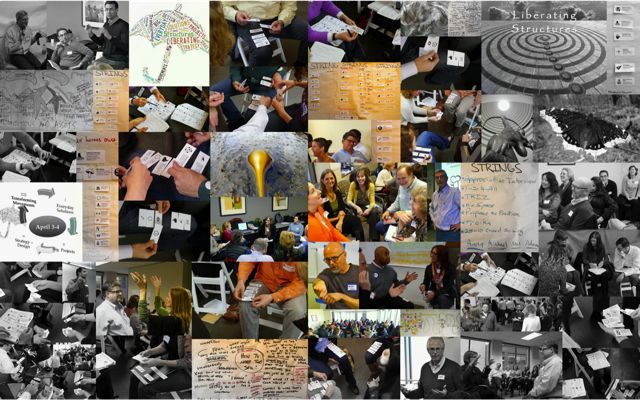Individual Transformations
Everyone thinks of changing the world, but no one thinks of changing themselves.
– Tolstoy
LS enable organizational and individual transformations. Field Stories document the transformation role leaders play within organizations. This page features the personal journey of one person at a time.
With Liberating Structures organization and personal transformations unfold hand-in-hand.
 Vanessa Vertiz
Vanessa Vertiz
Business Unit Director, Lima, Peru
What have Liberating Structures done for you?
Learning these new ways of sharing information, discussing and interacting, helped me understand that everything is more positive and enriching when the process is fun, participatory and open. The application of LS in business meetings provides better outcomes than the ones obtained from traditional interactions. Liberating Structures has changed my way of looking, planning and executing meetings, internally with my team and with customers, improving business results and personal relations.
Being able to manage interactions with LS helps me be more self-confident and a better leader in the eyes of my team and my customers. Being one of the early adopters of this structures in my organization, having success with them and helping others to be successful by teaching and walk with them through the planning and execution, increased my influence in the organization and I think this is in part one of the reasons I'm now a Business Unit Director in the subsidiary leadership team. LS helped me grow in my career.
How has Liberating Structures changed your life?
Well, I can't go back, some bridges have been burned. My life is actually very different now. Today when I talk to colleagues I can't stop thinking, "I need to know what he/she feels about this." I'm uncomfortable when I participate in traditional meetings. Whenever I have the chance, I try to apply LS.
LS has also influenced my interactions with my teenager children, I realized the poor impact I had when I just told them what to do, now I listen more, let them express their feelings and let them get into the conclusions on what is best for them, instead of imposing. They actually think it was their idea in first place! My husband is my partner in this process and it has improved my relations with them. We have fun together.
Read this open letter from Tatiana Riddle, "From a grateful student to all educators." Tatiana is a quiet student who sees how her voice and all other voices in the classroom can be heard. [center right, Tatiana fully participating in a Troika Consulting session in New Orleans]
who sees how her voice and all other voices in the classroom can be heard. [center right, Tatiana fully participating in a Troika Consulting session in New Orleans]
 Acadia Roher
Acadia Roher
Graduate Student, Clinton School of Public Service, Arkansas, USA
What has been your experience using Liberating Structures?
One of the best examples was using 9 Whys with friends and family. Two friends and I used it to help each other get to the bottom of our current life plans. For people not in our class, explaining 9 Whys is very simple. The people I tried it with seemed immediately intrigued after hearing about it.
It is easy to implement over lunch or coffee, which makes it very accessible for use in any informal setting. In several cases, using 9 Whys led to 3 or 4 hour conversations that were much deeper than usual.
After using it with several classmates, they indicated that they would be trying it in other settings. It always excites me when people who aren’t in our Liberating Structures class see the usefulness and importance of Liberating Structures and seek to use them elsewhere.
Seeing the ideas and styles spread around the Clinton School and the community has been especially fascinating. I have been invited to help design and facilitate:
- The final session for the Power, Privilege, and Oppression class (at the Clinton School for Public Service)
- A community event using Liberating Structures to bring people together to discuss possibilities for revitalizing Main Street (TRIZ, Impromptu Networking, 1-2-4-All, and 25/10 are in the mix).
- A meeting for local Millennials to engage with an idea I’ve been developing: a platform for young, local change makers to sustain themselves and their community initiatives while committing to the Central Arkansas area long term.
From the Millennials meeting I got good data and the Liberating Structures helped create new connections between some very active, progressive young, local change makers. The discussions continued informally for a long time outside the venue, and I got a lot of curious emails and calls from those that weren’t able to make the meeting. It was exciting to try liberating structures outside of the Clinton School bubble and see how effective they can be, even with a group of people who hadn’t experienced anything similar.
Prof. Arvind Singhal A Liberated Professor Speaks
Marston Endowed Professor, University of Texas, El Paso
Excerpt from the full story:
"Professors who revel in their vocational calling often hear their students say: “Professor, I enjoyed your class. I learned a lot. I thank you, and so on.” Such remarks, whether expressed orally, or penned in course evaluations and thank you notes, warm the heart and buoy the soul. I have been graced and buoyed by such warmth over the past 29 years.
However, in the past eight years or so, the nature of the student feedback I hear has noticeably changed. Qualitatively, it is deeper, more soulful. I increasingly hear: “This class changed my life;” “I learned so much about myself in this class;” “I am sad that this course is ending for I will miss my classmates;” and so on. And, I have even heard students say: “Thank you for teaching me about healthy communities. But thank you also for teaching me how to learn.” Such statements more than make a professor’s day. It makes a student’s life!
How do I explain this qualitative shift in student feedback? Perhaps, it is because I am getting older, wiser. Perhaps, my abilities to connect the classroom with the real world have multiplied appreciably. Perhaps I have learned to better manage classroom conflict. Perhaps I can at the drop of a hat pull out a compelling story to illustrate a point. Or, all of the above!". I believe there is one more explanation. In the past eight years, I have increasingly been exposed to, and put into practice some alternative ways to approach and design my classroom interactions.
These alternative approaches, called “Liberating Structures” were developed by my friends and complexity science practitioners, Keith McCandless and Henri Lipmanowicz.
Read the full story... A Liberated Professor Speaks
Read about UK consultant John O'Conner helping NGOs in India and a wonderful little organization called GoPhilanthropic. The story and PPT show is on John's blog, Facilitating Open Space: The Art of Getting Out of the Way.


